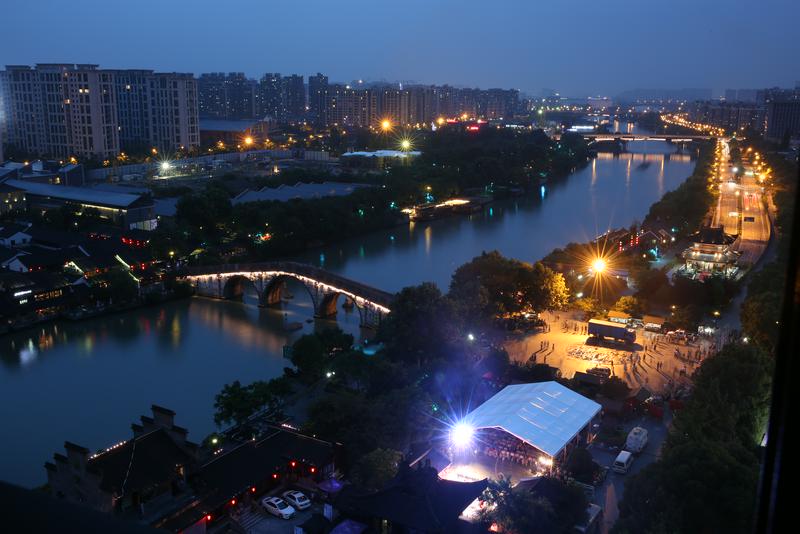China's Grand Canal: A World Heritage Site
By | July 11, 2019

The world’s oldest and longest man-made waterway is China’s Grand Canal. Not as well known as the Great Wall of China, the Grand Canal was just as an important megaproject with arguably a greater impact on Chinese civilization. In its 1,400 year history, the Canal has provided an important lifeline between northern and southern China thus unifying one of the world’s great civilizations.

Uniting China
China has two great river systems. The Yellow River in the North and the Yangtze River in the South. While commerce and trade were simplified by the rivers on an east to west basis, travel south to north and vise-versa was difficult. Starting during the Spring and Autumn Period (770-476 B.C.), Fuchai the King of Wu wanted to build a waterway to transport troops north for war. Other canals followed, linking lakes and rivers. However, the vision of uniting the Yellow and Yangtze Rivers is credited to the Emperors Wen (541-604 A.D.) and Yang (569-618 A.D.), the only two emperors of the short-lived Sui Dynasty.
The Sui Dynasty was founded after the Northern and Southern Dynasties Period (386-589 A.D) which was marked by civil war and division between the north and south of China. Emperor Wen of Sui united the entirety of China in 589 A.D. Unity must have been on his mind which is something a Grand Canal could do. Wen ordered the start of the project, but his son, the Emperor Yang saw to its completion. Work began in 605 A.D

Building the Grand Canal
It is estimated that about 2 million conscripted workers were needed to build the Canal. Many died in the process due to starvation because there were not enough people available to harvest the crops. They completed the work in 609 A.D. The canal’s first stage linked the Eastern capital of Luoyang to the Yangtze near modern-day Yangzhou. To celebrate, Emperor Yang headed a purported 65-mile long flotilla of vessels to Yangzhou. The Canal not only linked the Yellow and Yangtze Rivers, but also managed to hook in the Hai, Huai, and Qianting rivers.

Impact of the Grand Canal
The new waterway facilitated the transportation of troops, goods, and people. It allowed for interconnected commerce between the north and south, with the north benefitting by an easier means to transport food from the more fertile Yangtze river valley. It also helped to link the country together culturally. It strengthened the ability of the government to control China since troops could now rely on the Canal as a logistical lifeline.
The Canal’s importance was apparent, and the waterway was soon expanded northward to Beijing and south to Hangzhou. In order to maintain the canal, the imperial government built a road that ran beside it. But the true means of maintaining the waterway was by a monopoly by the imperial government on strategic materials and grain (the transportation was handled by soldiers) as well as taxation.

Maintaining the Grand Canal
The Canal fell into disrepair during the 12th century mainly due to military conflicts. But under the later Yuan (Mongol) Dynasty, the Canal was revitalized under the Emperor Kublai Khan who straightened the route to a more efficient means of bringing materials to his capital of Dadu (Beijing). The later Ming Dynasty also expanded and improved it. To illustrate the importance of the waterway, when the British wanted to suppress the Chinese during the First Opium War (1839-1842), they occupied a critical point of the canal in order to interrupt the grain and tax flow to Beijing.

Statistics
The Grand Canal is 1,104 miles long. In comparison, the Suez Canal is 120.1 miles and the Panama Canal is 50 miles long. To put it another way, the length of the canal is about the same as the distance from Boston, Massachusetts to just past Savannah, Georgia.
The maximum difference in height between sections is 131 feet. The Song Dynasty (960-1279) helped improve going to these different elevations when Qiao Weiyue invented the pound lock. The pound lock has two gates which allow the trapped water inside to rise or lower to the level of the connecting waterways. This type of lock is still in use in canals today.

A World Heritage Site
Although not as well-used today, the Grand Canal still plies with heavy commercial transport while in other section tour boats predominate. It has also slowly been recognized for its historical value. However, in 2014, UNESCO declared the Canal a World Heritage site stating that it was the “most extensive civil engineering project ensemble prior to the Industrial Revolution.”
This is true. Without the Grand Canal, there may be no China that we know today -- instead, there may have been many Chinas.

